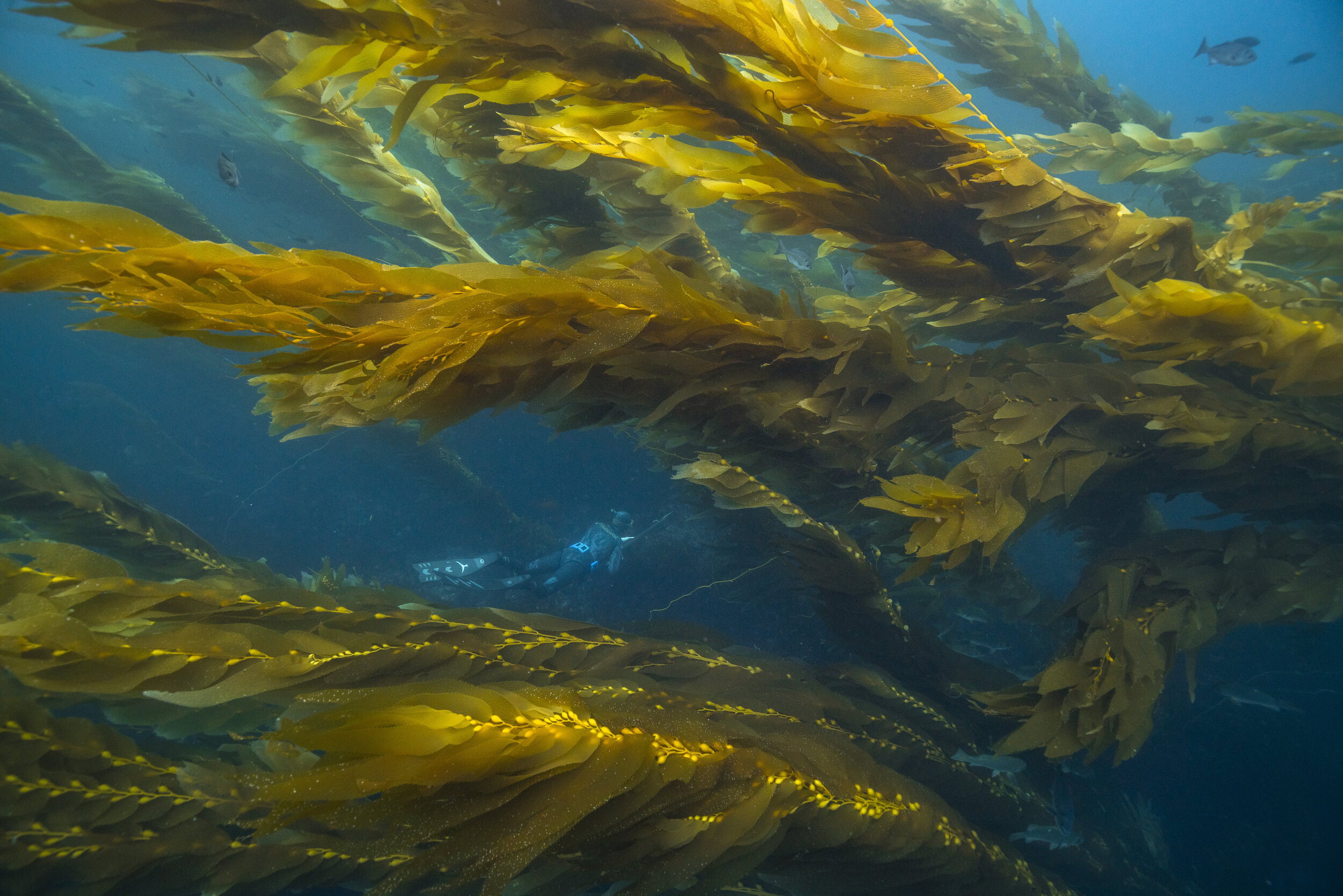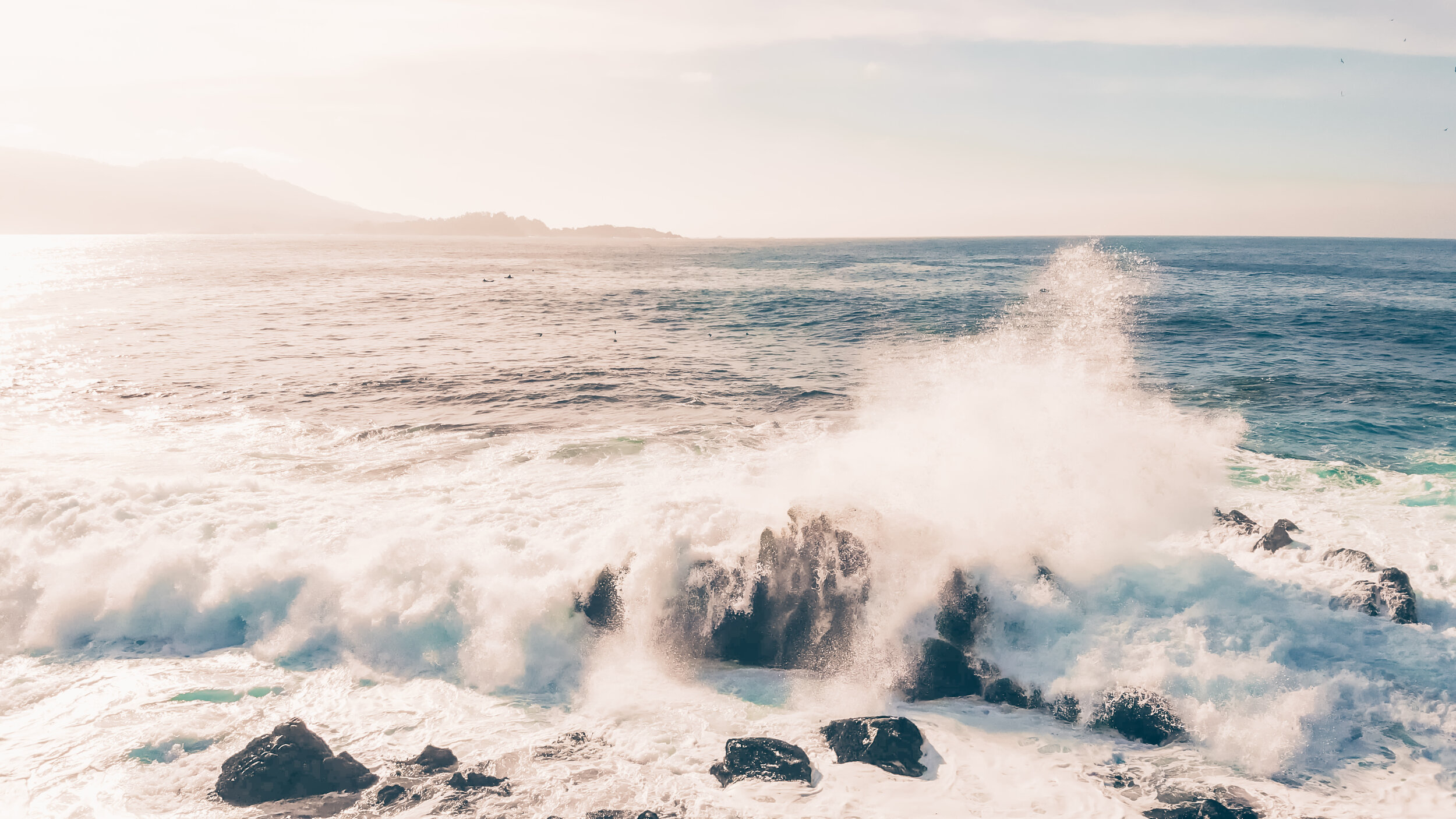
One Stop Shop for Beginners
Everything you need to know to prepare for spearfishing California’s Central Coast
Spearfishing has been practiced for thousands of years and has shared origins in every corner of the globe. The modern spearfisher has many faces: from the indigenous Bajau of the Philippines, who use home-fashioned equipment and highly evolved physiology to dive to impressive depths, to the typical Monterey Bay freediver who dons a 7mm neoprene wetsuit, kicks aerospace-grade carbon fiber fins, and carries an assortment of technological marvels while hunting the chilly bay waters. No matter the person or the equipment they use, however, the goal remains the same—to enter into the aquatic environment, dive beneath the surface while holding your breath, and capture food with the aid of a pointy stick. That seems easy enough, right?
In reality, however, practicing spearfishing well and safely requires a diver to develop a breadth of skills from multiple disciplines. The modern spearfisher is part freediver, part hunter, part ecologist, and part chef. We begin by cultivating a deep connection with the environment we will be hunting in and knowledge of its inhabitants, then add to that an understanding of ourselves and the unique physiology we share with other marine mammals, which allows us to dive to incredible depths while holding our breath. Once we understand our bodies and our environment, we begin to add equipment—the gear that will protect us and aid us in our hunt. Then, once we are fully prepared to plunge beneath the surface, we need to learn the strategies and tactics that make a skilled, successful hunter. Of course, provided we emerge victorious, there is still the matter of honoring our catch by preparing it in a way that is both sustainable and delicious. These are the skills we value in our community, and those that we hope to impart to you in this series of articles.

The Environment
Although spearfishing takes place in a wide range of environments around the world, this discussion will be focused on the most common and popular place to practice spearfishing: the ocean. In time, each spearfisher develops their own special relationship with the ocean and cultivates the skills and instincts required to be a safe and effective freedive hunter. Here are some basic guidelines that beginners can use to help read conditions, decide where and when to go, and practice spearfishing safely while in the ocean.
The Diver
One of the first steps in every spearfisher’s journey is becoming a competent and confident freediver. The best way to do this is to take a credited freediving course, where you will develop the understanding, skills and techniques to become a strong and safe diver. Here we discuss the basics, but is not a substitute for the information and quality of instruction given during a course taught by a certified professional freediving instructor.
While spearfishing in its most basic form can be practiced with nothing but a sharp stick, the majority of modern spearfishers take advantage of an abundance of sophisticated gear to aid in the hunt. Neoprene wetsuits keep us warm and protect us from cuts, bruises, and stings. Low volume masks help us see clearly, while snorkels help us breathe with our face submerged. Fins made from a variety of different modern composites propel us to the depths. We wear digital watches that can register our depth and tell us how long to recover on the surface before our next dive. Even spearguns have evolved from simple rubber slings to complex energy transfer systems with multiple bands and pulleys that can launch a spear with astonishing speed and power to hunt any manner of fish in any environment. Today’s spearfisher is blessed with such a remarkable selection of excellent equipment it can be difficult to know where to begin, and many a new diver has fallen into the trap of buying the wrong gear when starting out. Here we will give you a better understanding of the most important equipment choices so that you can make the right purchase from the beginning.
The Equipment

The Hunt
Most spearfishers go through a frustrating transition, beginning by frantically chasing any fish they see but evolving into a patient hunter, silently holding their breath and waiting for the right fish to swim by. The former catches fish mostly by luck and sheer will, while the latter catches fish by skill and experience, with a little luck thrown in now and again. It goes without saying that we would all like to embody the silent hunter, but how do we get there? Here we will discuss the basic hunting strategies spearfishers use around the world to successfully capture fish.
Caring for and preparing your catch: The privilege of entering the ocean and harvesting its bounty carries with it the responsibility of ensuring that our catch is used, prepared, and cared for in a manner that exemplifies its eating qualities, leaving little to waste. But you do not need to a cooking school and become a gourmet chef to take full advantage of your catch. With a few basic techniques and considerations, your catch will always stay fresh and ready to prepare in any way you see fit.
The Fish
Do you still have any questions about diving, gear or hunting?
Let us know!



